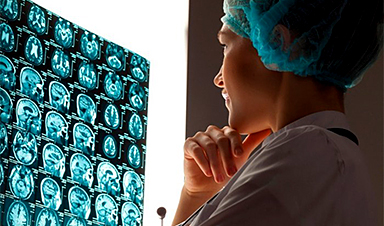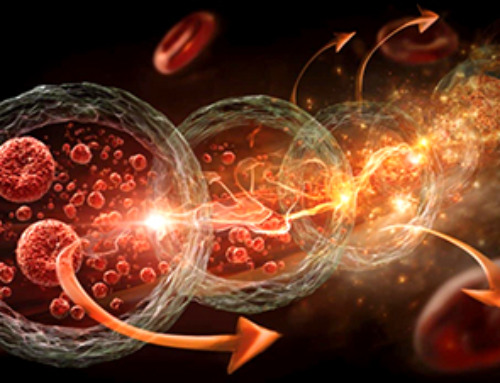In today’s hospitals and healthcare clinics, a new doctor’s new assistant is now often on the job — in the form of artificial intelligence. Whether it’s analyzing medical images or guiding robots that assist with surgeries, AI is making steady inroads into our hospitals and clinics. Need an online nursing assistant or a watchdog that helps detect dosage errors? There’s an AI application for that.
The advent of AI in healthcare is a promising trend in terms of both patient care and economic efficiency. AI can help us address a forecasted shortage of physicians, particularly in specialty-care fields, while containing the costs of caring for an aging and growing population. A recent study by a team of researchers from the consulting firm Accenture found that the use of 10 promising AI applications could create up to $150 billion in annual savings for U.S. healthcare by 2026.
For an example of the potential of AI in healthcare, we need to look no further than Gustave Roussy, a leading European center for cancer research and care. In a study published this summer in the medical journal The Lancet Oncology, a team of medical researchers from Gustave Roussy and a few other institutions demonstrated that AI can process medical images to extract biological and clinical information to help with immunotherapy treatment, according to a news release on the study.
In this groundbreaking study, the researchers used an algorithm they designed and developed to analyze CT scan images and create a “radiomic signature.” This signature defines the level of lymphocyte infiltration of a tumor — or the degree to which immune cells have moved from the blood into a tumor cell. The radiomic signature also provides a predictive score for the efficacy of immunotherapy in the patient.
Here’s how AI played into this research: Using an approach based on machine learning, the team first taught the algorithm to use relevant information extracted from CT scans of patients participating in the study. Then, based solely on images, the algorithm learned to predict what the genome might have revealed about the tumor immune infiltrate, and it established the radiomic signature.
The announcement summarizing the findings of the study notes that in the future, physicians might be able to use imaging to identify biological phenomena in a tumor located in any part of the body without having to perform a biopsy.
At Dell EMC, this research is particularly close to our hearts because we are active supporters of Gustave Roussy.
Image Credit: Dell EMC
News This Week
AI matches doctors in mapping lung tumors for radiation therapy
In radiation therapy, precision can save lives. Oncologists must carefully map the size and location of a tumor before delivering high-dose radiation to destroy cancer cells while sparing healthy tissue. But this process, called [...]
Scientists Finally “See” Key Protein That Controls Inflammation
Researchers used advanced microscopy to uncover important protein structures. For the first time, two important protein structures in the human body are being visualized, thanks in part to cutting-edge technology at the University of [...]
AI tool detects 9 types of dementia from a single brain scan
Mayo Clinic researchers have developed a new artificial intelligence (AI) tool that helps clinicians identify brain activity patterns linked to nine types of dementia, including Alzheimer's disease, using a single, widely available scan—a transformative [...]
Is plastic packaging putting more than just food on your plate?
New research reveals that common food packaging and utensils can shed microscopic plastics into our food, prompting urgent calls for stricter testing and updated regulations to protect public health. Beyond microplastics: The analysis intentionally [...]
Aging Spreads Through the Bloodstream
Summary: New research reveals that aging isn’t just a local cellular process—it can spread throughout the body via the bloodstream. A redox-sensitive protein called ReHMGB1, secreted by senescent cells, was found to trigger aging features [...]
AI and nanomedicine find rare biomarkers for prostrate cancer and atherosclerosis
Imagine a stadium packed with 75,000 fans, all wearing green and white jerseys—except one person in a solid green shirt. Finding that person would be tough. That's how hard it is for scientists to [...]
Are Pesticides Breeding the Next Pandemic? Experts Warn of Fungal Superbugs
Fungicides used in agriculture have been linked to an increase in resistance to antifungal drugs in both humans and animals. Fungal infections are on the rise, and two UC Davis infectious disease experts, Dr. George Thompson [...]
Scientists Crack the 500-Million-Year-Old Code That Controls Your Immune System
A collaborative team from Penn Medicine and Penn Engineering has uncovered the mathematical principles behind a 500-million-year-old protein network that determines whether foreign materials are recognized as friend or foe. How does your body [...]
Team discovers how tiny parts of cells stay organized, new insights for blocking cancer growth
A team of international researchers led by scientists at City of Hope provides the most thorough account yet of an elusive target for cancer treatment. Published in Science Advances, the study suggests a complex signaling [...]
Nanomaterials in Ophthalmology: A Review
Eye diseases are becoming more common. In 2020, over 250 million people had mild vision problems, and 295 million experienced moderate to severe ocular conditions. In response, researchers are turning to nanotechnology and nanomaterials—tools that are transforming [...]
Natural Plant Extract Removes up to 90% of Microplastics From Water
Researchers found that natural polymers derived from okra and fenugreek are highly effective at removing microplastics from water. The same sticky substances that make okra slimy and give fenugreek its gel-like texture could help [...]
Instant coffee may damage your eyes, genetic study finds
A new genetic study shows that just one extra cup of instant coffee a day could significantly increase your risk of developing dry AMD, shedding fresh light on how our daily beverage choices may [...]
Nanoneedle patch offers painless alternative to traditional cancer biopsies
A patch containing tens of millions of microscopic nanoneedles could soon replace traditional biopsies, scientists have found. The patch offers a painless and less invasive alternative for millions of patients worldwide who undergo biopsies [...]
Small antibodies provide broad protection against SARS coronaviruses
Scientists have discovered a unique class of small antibodies that are strongly protective against a wide range of SARS coronaviruses, including SARS-CoV-1 and numerous early and recent SARS-CoV-2 variants. The unique antibodies target an [...]
Controlling This One Molecule Could Halt Alzheimer’s in Its Tracks
New research identifies the immune molecule STING as a driver of brain damage in Alzheimer’s. A new approach to Alzheimer’s disease has led to an exciting discovery that could help stop the devastating cognitive decline [...]
Cyborg tadpoles are helping us learn how brain development starts
How does our brain, which is capable of generating complex thoughts, actions and even self-reflection, grow out of essentially nothing? An experiment in tadpoles, in which an electronic implant was incorporated into a precursor [...]






















Leave A Comment